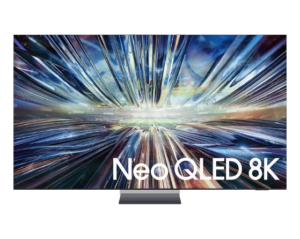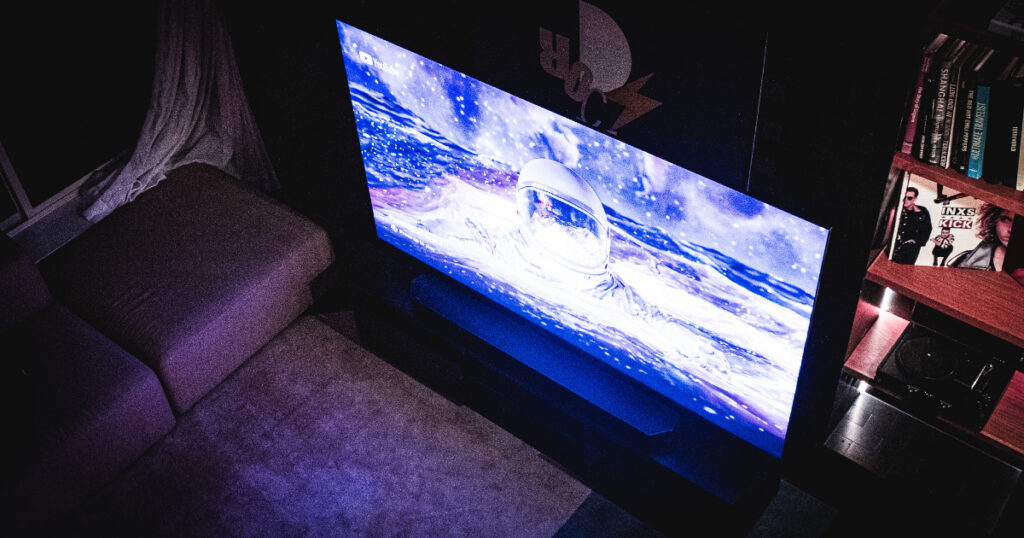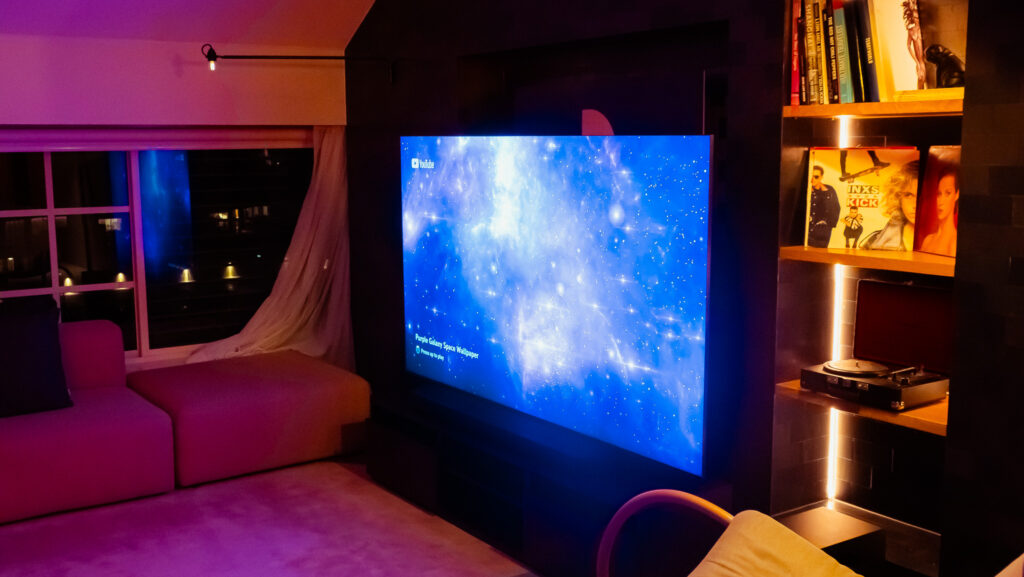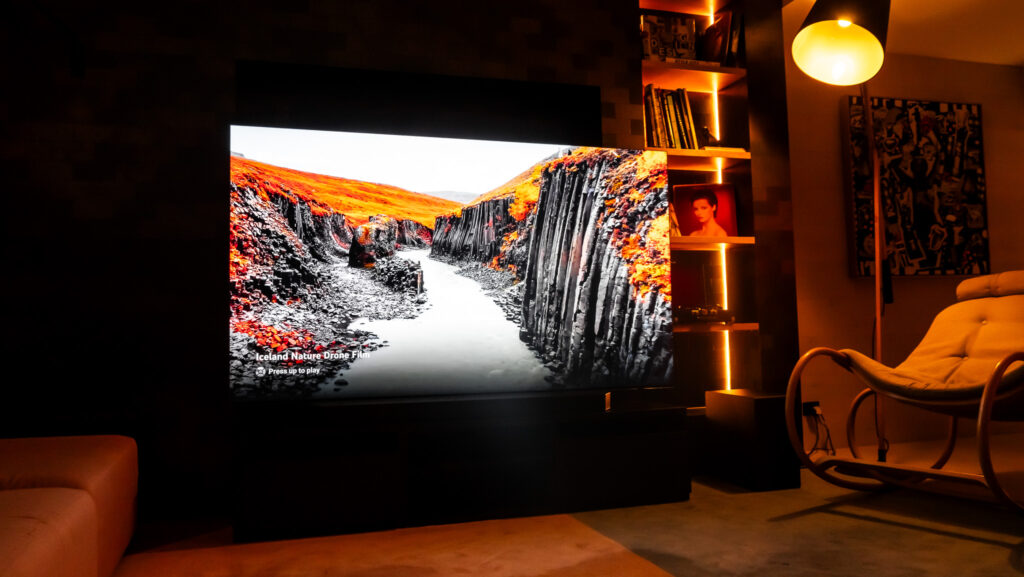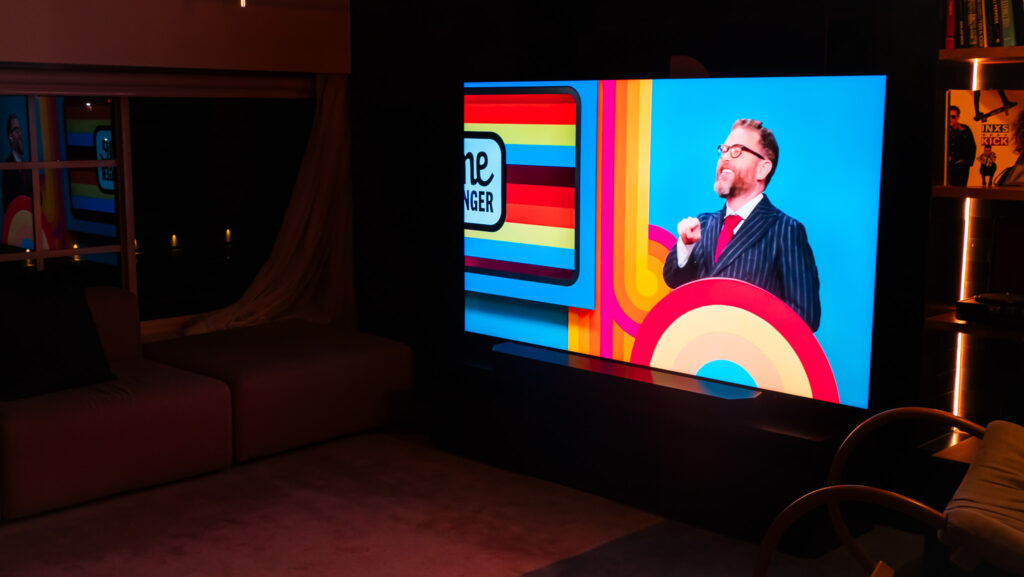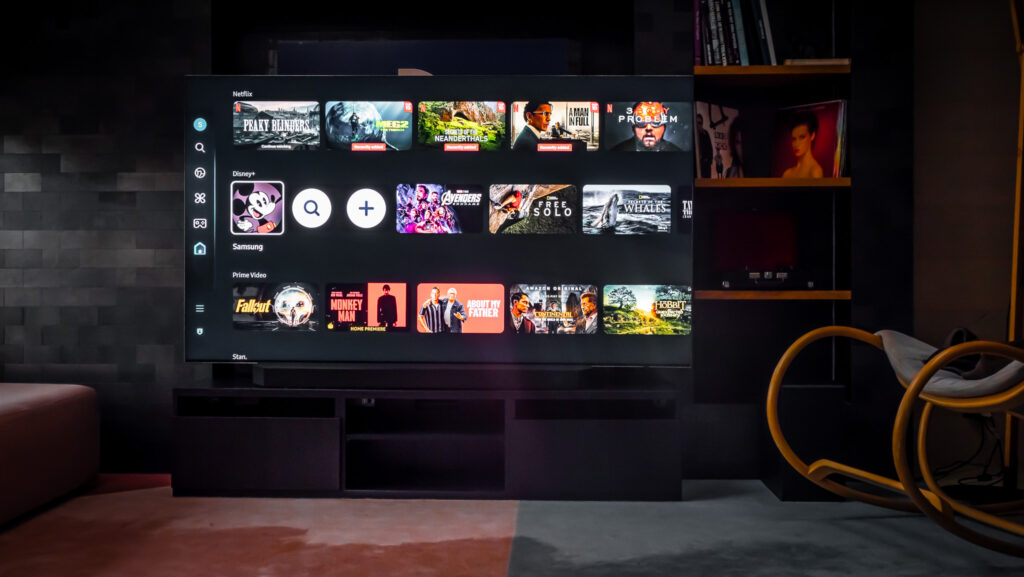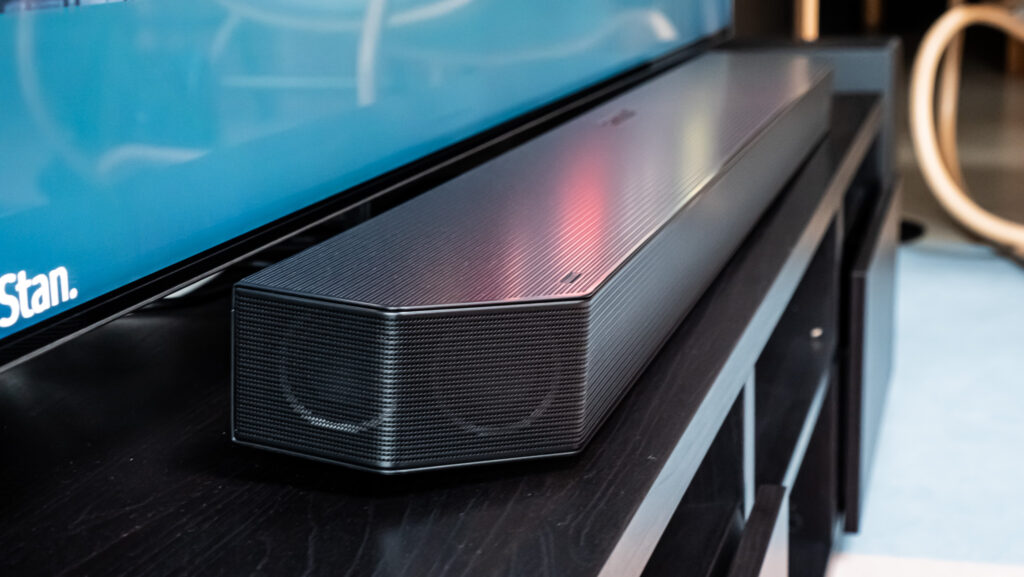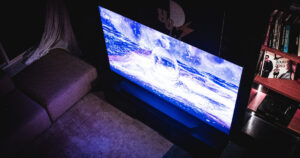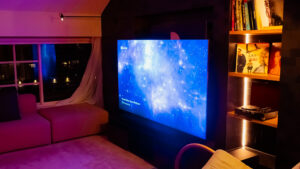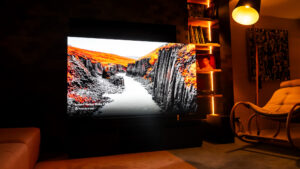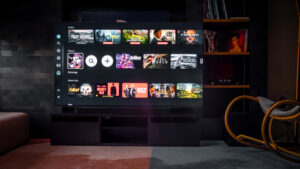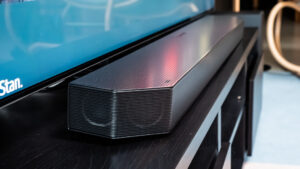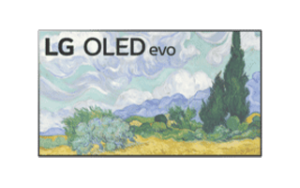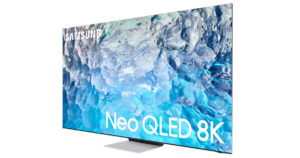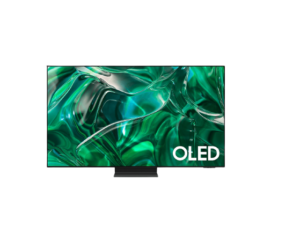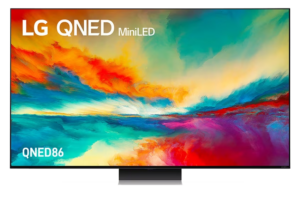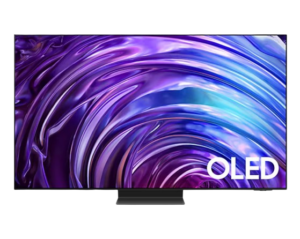Glare-free OLED feels like the future.
Hands-on review with the Samsung QN900D Neo QLED 8K TV
The QN900D isn't the only 8K screen that Samsung is bringing to Australia this year but if you're in the market for an 8K TV it's probably the only one you care about.
Introduced back at CES 2024 and available in three different sizes (85, 75 and 65 inches), the QN900D Neo QLED represents the apex of Samsung's home entertainment offering in 2024. On the outside, it features a gorgeous edge-to-edge screen with Quantum Dots. This front end comes backed up by a Mini-LED array, making for a combination that brings with it all the usual advantages in contrast and colour.
Then, under the hood, the hardware here promises to reap the benefits of a more powerful NQ4 Gen 3 AI processor. On paper, this new chipset is twice as fast as the previous model and boasts eight times as many neural networks. In practice, that translates to all the usual features plus a few new ones.
If the questions that you're asking about the QN900D are simple, you'll get answers of the same calibre. Is it gorgeous to look at? Absolutely. Does it live up to the hype as Samsung's best TV? Without a doubt. However, as soon as you give into complexity and go one layer deeper, it becomes hard to shake the sense that things aren't as simple as they might first appear.
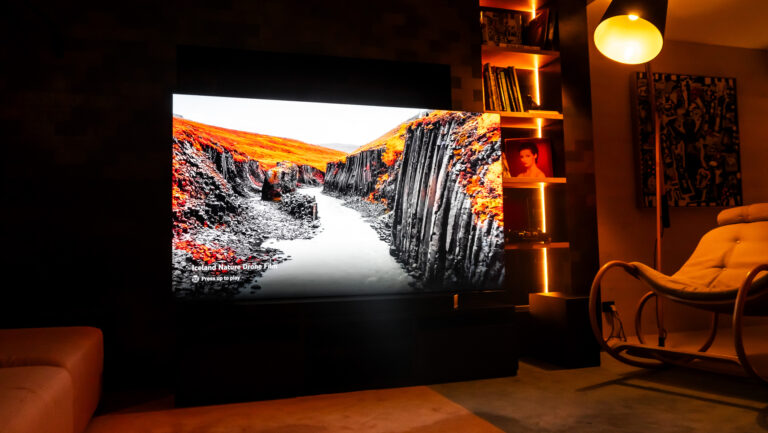
Initial pros
- An upgraded processor: I've said it once, I'll say it again: less is more when it comes to Smart TV interfaces. From the moment Samsung moved away from a less-intrusive navigation bar towards a phone-inspired app library, I've been one of the people grumbling about it. Part of the reason why is that Samsung's modern Smart Hub experience has typically felt slower and less responsive than it ought to be. On this specific front, I will say that the NQ4 Gen 3 AI processor inside the QN900D did a great job of alleviating some of these worries. In short, this speed up isn't enough to make me love the smart interface here but it does make it significantly better than it has been in the past. The UI still covers the screen, which I don't love, but it does feel faster, which I do like.
- Dazzlingly design: It's hard not to like what the QN900D has going on when it comes to form-factor. It's lavishly thin, with an edge-to-edge screen, minimal wires (courtesy of Samsung's One Connect Box) and a backlight that's more than bright enough to deal with glare. Many of these bells, whistles and other details aren't necessarily new but they do add up when it comes to the overall home viewing experience it offers. You get the sense that the folks at Samsung have thought more about just the raw hardware involved.
- Crisper contrast, vibrant colors and absolute blacks: Thanks to the Quantum Dots and Mini LEDs involved, the QN900D is built to offer the winning-combination of more vibrant colors, deeper black and greater contrast. Netflix's new Ripley series proved a tremendous demonstration for the latter, with Andrew Scott's menacing micro-expressions and the aging architecture coming through in impressive clarity. Meanwhile, the Quantum Dot-enhanced color made for a perfect match with animated series like Blue-Eye Samurai and Arcane.
- Bigger, better and more bespoke soundscapes: While the headline act here is the 8K screen, the audio-specific feature might be something of a secret weapon. The QN900D features a 90W 6.2.4-channel sound system with both up, down and side-firing speakers. When used in tandem with the Q990D Sound Bar, it's capable of delivering engrossing soundscapes that felt the closest to a true cinema experience I've ever experienced from a home theater setup. The otherworldly score of Alex Garland's Annihilation has never sounded more unsettling.
The best part here might be that achieving this kind of high-fidelity soundscape is more feasible for more everyday users thanks to Samsung's SpaceFit SoundPro. This feature uses reverberations from your soundbar setup to automatically tailor the output to your acoustic environment.
Initial cons
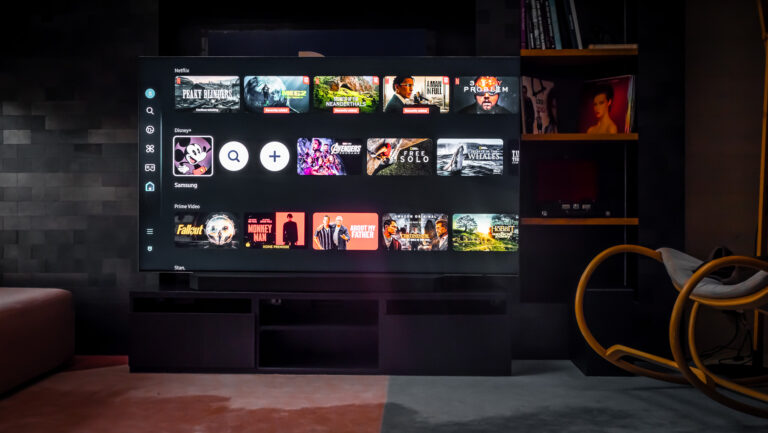
- Price. Look, there's no getting around the fact that the QN900D is as expensive as you'd expect. Even in its smallest size, you're still looking at spending more than $7000. As good as the results it delivers are, that sum is going to be hard to stomach. The QN900D does everything it can to try and justify that price but if you're not an audiophile it's hard to imagine this thing competing against the simple allure of the many cheaper options available.
- AI upscaling sometimes feels like it goes too far: Ever since 8K TVs began to trickle into the market, upscaling has been the critical question. For 99% of people, actual 8K content isn't available. The good news is that the content upscaling built into TVs like the QN900D is decent enough that issue isn't as insurmountable as it sounds. That said, this year's Samsung TVs are now incorporating generative AI. This isn't a huge leap from how the company has used deep learning and the like in the past, it does cast the dynamics between you, the content you watch and the TV you're watching it into new light. I couldn't help but asking myself whether something is meant to look the way that the way. The upscaling can add details that isn't meant to be there, which can have unexpected conseqences. The effect on animated content is immaculate, but the knock-on when it comes to special effect heavy shots can be much more insonsistent. The explosion at the tail end of Christopher Nolan's Oppenheimer looks incredible. The CGI in something like RRR or Poor Things doesn't look quite right. You can always turn the bulk of these picture enhancements off by enabling Filmmaker Mode, but if you that then the gulf between the quality of the content you're watching and the quantity of pixels on offer becomes even more noticeable.
- Gaming and search integration isn't quite there: Despite my reverssations about Samsung's shift towards fleshing out its Smart Hub Interface, there is something to like about the idea of aggrating all your streaming services into one unified screen. The content recommendation algorithm here will even prioritise the content from one service over another based on how you've ordered them. However, the way that this in turn integrates with Samsung's game streaming efforts leaves something to be desired. More than once, I'd search for a given series only for the results to be drowned out by gaming content. It does help that, on the other side of the equation, booting into Microsoft's Xbox Game Streaming service proved to be something of a mixed bag. Despite a 200mbp/s internet connection, latency proved to be a major hurdle and the quality of the stream was not up to par. The Xbox Cloud Streaming even managed to hard crash the TV at one point. These instances may be anomalies but for me to encounter them during my hands-on session does not invite a lot of confidence.
Final thoughts
There’s something primal about our relationship to pixels and something intoxicating about gazing into the depths of a TV screen with the color, clarity and contrast that the QN900D offers. If the questions is this good, the answer is a resounding yes. If the question is it too much, then the answer is a little more complicated.
It feels like a situation where when all you have is an AI-shaped hammer, everything starts to look like an AI-shaped nail.
How much does the Samsung QN900D Neo QLED TV cost?
Samsung’s new QN900D Neo QLED 8K TV is available now from retailers like JB Hi-Fi, Bing Lee and Samsung itself. See the table below for a comparison of local pricing for each available screen size.
Disclosure: This author tested the Samsung Q900D Neo QLED 8K TV during an overnight stay in a hotel room as a guest of Samsung.
Related Articles





